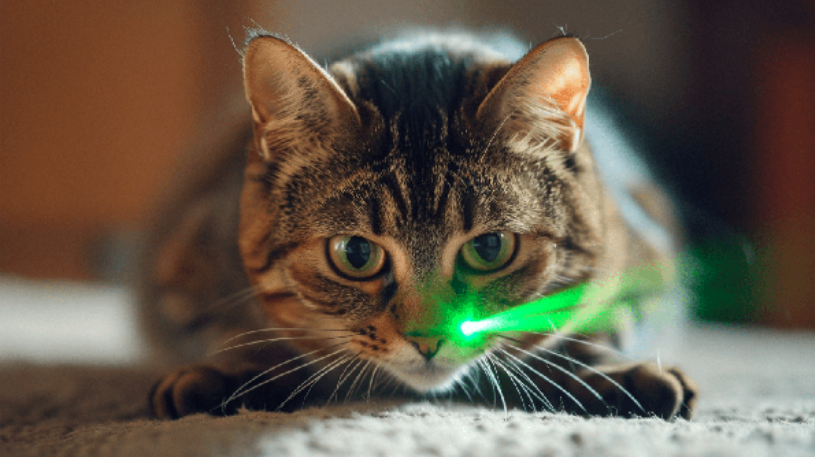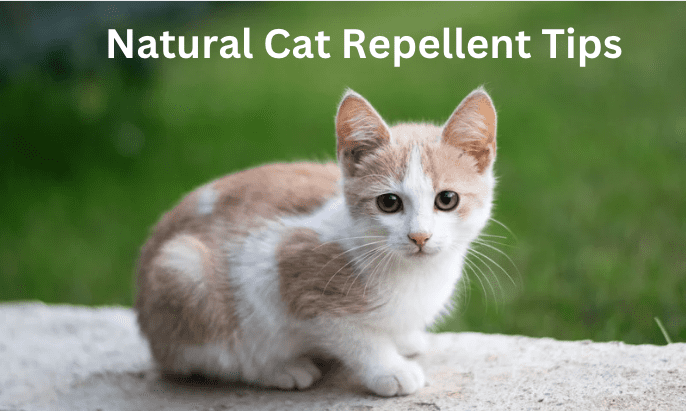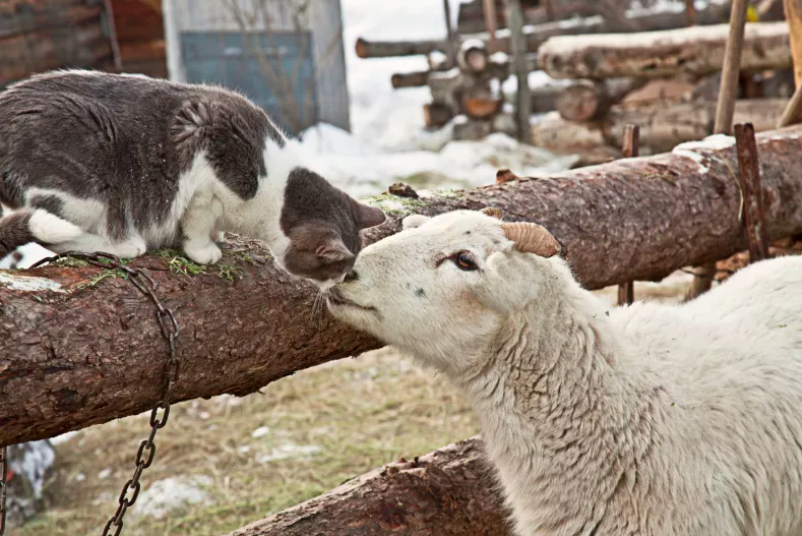Cats
Best Cats for People with Allergies: Finding Your Perfect Feline Friend
Best Cats for People with Allergies: Finding Your Perfect Feline Friend
Are you a cat lover with a nagging allergy? Don’t worry; you don’t have to give up on your dream of having a furry feline friend.
We understand the struggle of wanting a cat while dealing with allergies, and that’s why we’re here to help you find the best cats for people with allergies.
With a little know-how and the right choice of cat breed, you can enjoy the companionship of a charming kitty without sneezing up a storm.
Understanding Allergies and Cats: Navigating the Allergen Maze
When you’re a cat enthusiast battling allergies, the seemingly innocent world of feline companionship can become a veritable maze of allergens. But fear not, for we’re here to shed light on the intricate relationship between allergies and cats.

The Culprit: Fel d 1 Protein
At the heart of cat allergies lies the notorious Fel d 1 protein. This mischievous protein is found in a cat’s skin cells, saliva, and urine.
The feline grooming routine spreads Fel d 1 onto their fur and dander, and that’s when the allergy trouble starts. When these allergens make their way into the air, they can trigger allergic reactions in susceptible individuals.
Sneezes and Sniffles: Allergic Reactions
For those sensitive to Fel d 1, encounters with cats can lead to an array of allergic reactions. Sneezing fits that seem unending, itchy and watery eyes, runny noses that rival the Niagara Falls – these are just a few common symptoms.
The severity of these reactions can vary from person to person, but the culprit remains the same: Fel d 1 allergens.
Allergen Dissemination: Beyond the Fur
The sneaky Fel d 1 allergens can find their way into your home and your life in ways you might not expect. Even if you don’t have a cat, allergens can hitch a ride on the clothing of cat-owning friends or family members.
They can linger in public spaces, waiting to trigger your allergies. So, staying allergy-free in a cat-loving world isn’t always a walk in the park.
Low-Allergen Cats: Fact or Fable?
The notion of hypoallergenic cats is both a source of hope and confusion. While no cat is entirely hypoallergenic, some breeds do produce fewer allergens than others.
But it’s important to understand that individual responses vary, and what works for one person might not work for another.
These so-called low-allergen cats can be a ray of hope for allergy sufferers, but it’s wise to manage your expectations.
Fel d 1 Levels and Cat Gender
There’s an interesting twist when it comes to Fel d 1 levels and cat gender. Contrary to popular belief, male cats aren’t the sole bearers of high allergen levels.
Research suggests that both male and female cats can produce significant levels of Fel d 1, so it’s not just the tomcats that might trigger your allergies.
Kittens vs. Adult Cats: Allergen Impact
You might assume that kittens produce fewer allergens than their fully grown counterparts, but that’s not always the case.
While some studies suggest that kittens might have lower allergen levels, other factors like grooming habits and behavior can influence the dispersion of allergens.
So, if you’re banking on kittenhood to alleviate your allergies, it’s essential to weigh the pros and cons carefully.
Managing Allergies: A Multi-Faceted Approach
Understanding allergies and cats is the first step, but managing them requires a comprehensive strategy. Opting for a cat breed with lower allergen levels is a great start, but it’s equally crucial to maintain a clean environment.
Regular grooming, including brushing and bathing, can significantly reduce allergen buildup. And if you’re thinking of introducing a cat into a cat-free space, remember that allergens can linger, so a thorough cleaning might be in order.
The Bottom Line
In the grand tapestry of feline companionship, allergies can feel like an inconvenient thread.
However, armed with knowledge about Fel d 1 allergens, low-allergen cat breeds, and effective management strategies, you can navigate this allergen maze more confidently.
Remember, while we’ve shared insights to empower you, consulting with allergists and veterinarians remains pivotal in making informed decisions that align with your unique health needs.
So, don’t let allergies dampen your feline-loving spirit – with the right approach, a world of purrs and cuddles awaits!
Hypoallergenic Cat Breeds: Fact or Fiction? Separating Myth from Reality
The concept of hypoallergenic cat breeds has captivated the hearts of allergy sufferers worldwide. It’s an enticing idea: a cat that won’t send you into a sneezing frenzy or make your eyes itch uncontrollably.
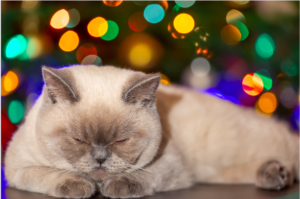
But is this concept grounded in fact, or is it merely a tantalizing fiction? Let’s dive into the world of hypoallergenic cats and uncover the truth behind the curtain of allergens.
Understanding Hypoallergenic Claims
To understand the notion of hypoallergenic cat breeds, it’s crucial to grasp the science behind allergens. Fel d 1 protein, the chief troublemaker responsible for cat allergies, is what we’re up against.
The idea of hypoallergenic breeds stems from the belief that certain cats produce fewer allergens, making them more tolerable for allergy-prone individuals.
Levels of Fel d 1: The Key Differentiator
When it comes to hypoallergenic breeds, it all boils down to Fel d 1 level. Some cat breeds indeed have genetic variations that lead to lower production of this pesky protein.
However, it’s essential to note that these lower levels don’t necessarily mean zero allergens. While some breeds might produce fewer Fel d 1 molecules, no cat can be entirely allergen-free.
Breed Variability: A Nuanced Perspective
The idea of hypoallergenic cat breeds isn’t a one-size-fits-all concept. Even within a specific breed, individual cats can have varying allergen levels.
Genetics, environment, and even grooming habits play a role in determining how much Fel d 1 a cat releases into the world. This means that while choosing a breed with lower allergen potential is a smart move, you might still encounter some degree of allergenicity.
Testing Hypoallergenic Claims
Numerous anecdotes and testimonials circulate the internet about hypoallergenic cats working miracles for allergy sufferers.
While these stories might indeed be true for some individuals, it’s important not to blindly believe every claim. Scientific research on the topic is ongoing, and individual responses can vary widely.
The best way to gauge your compatibility with a specific breed is to spend time with individual cats before making a decision.
Low-Allergen Cat Breeds: The Contenders
Let’s shine a spotlight on some cat breeds that often come up in hypoallergenic conversations:
- Siberian Cats: These majestic beauties are often celebrated for their lower allergen levels. Their long, luxurious coats might seem counterintuitive, but their genetic makeup does lead to decreased Fel d 1 production in many cases.
- Balinese Cats: With their striking resemblance to Siamese cats, Balinese cats are another contender. Their fine fur and elegant demeanor come with a potential reduction in allergen levels.
- Russian Blue Cats: Known for their stunning blue coats, Russian Blues are celebrated for their hypoallergenic potential. Their short, dense fur might contribute to fewer allergens floating around.
Managing Expectations: The Real Deal
If you’re considering bringing a hypoallergenic cat into your life, it’s vital to manage your expectations. While these breeds might offer some relief to allergy sufferers, they won’t eliminate allergies entirely.
Thorough grooming practices, regular cleaning of your living space, and potentially using air purifiers are all part of the equation to create a harmonious coexistence.
The Takeaway
The allure of hypoallergenic cat breeds is undeniable, and for some, they can provide a pathway to cat companionship without constant allergy battles.
However, it’s important to approach the concept with a healthy dose of reality. No cat can completely eradicate allergens, and individual responses can be unpredictable.
If you’re considering adopting a hypoallergenic cat, spend time with potential feline friends, and consult with allergists and veterinarians to make an informed decision that aligns with your health needs.
Remember, a hypoallergenic label might not guarantee a sneeze-free life, but with the right strategies and mindset, you can still revel in the joy of feline companionship.
Grooming and Allergy Management: Taming Fel d 1, One Brushstroke at a Time
So, you’ve taken the plunge and welcomed an adorable hypoallergenic cat into your home. The purring, the playfulness, the companionship – it’s all unfolding just as you hoped.

But wait, there’s a catch: allergens. Don’t fret; we’re here to guide you through the world of grooming and allergy management, ensuring that your feline friend brings you joy, not sneezes.
The Grooming Routine: A Cat’s Best Friend
Grooming isn’t just about maintaining a cat’s appearance; it’s a powerful tool in allergen management. Regular brushing serves a dual purpose: it keeps your cat’s coat clean and reduces the spread of allergens.
As you brush, you’re removing loose fur and dander, preventing them from settling into your living space.
Choosing the Right Tools
Not all brushes are created equal, especially when allergies are in the equation. Opt for brushes designed to trap and remove loose fur and dander effectively.
Slicker brushes and grooming mitts can be your go-to options. Remember, a happy and relaxed cat is more likely to cooperate during grooming sessions, so make it a pleasant experience for both of you.
Bathing: The Controversial Topic
Ah, the hotly debated topic of cat baths. Some cats tolerate water better than others, but whether you choose to bathe your cat or not, it’s essential to consult your veterinarian first.
Bathing can help reduce allergen levels, but it’s not a magic bullet. If you’re considering bathing, use cat-friendly shampoos and ensure your furry friend feels comfortable throughout the process.
Allergy-Friendly Cat Shampoos: Worth the Splurge
When it comes to choosing a shampoo, opt for formulations specifically designed for cats with allergies. These shampoos often contain ingredients that not only cleanse but also help manage allergen levels.
Always follow the instructions, and if you’re unsure, consult your veterinarian for recommendations tailored to your cat’s needs.
The Power of Hygiene: Beyond the Cat
Grooming your cat is just one part of the equation. Maintaining a clean environment is equally vital.
Regularly clean your cat’s bedding, vacuum your home using a vacuum cleaner equipped with a HEPA filter, and dust surfaces to keep allergen levels in check.
Allergy-friendly covers for furniture and bedding can also help reduce allergen buildup.
Air Purifiers: Allies in Allergy Battle
Investing in a high-quality air purifier with a HEPA filter is a strategic move in your allergy management arsenal. These devices help capture airborne allergens, including those pesky Fel d 1 molecules.
Place the purifier in rooms where you and your cat spend the most time and watch it work its magic in creating a more breathable space.
Creating Safe Zones: Balancing Freedom and Allergen Control
Designating specific areas as “cat-free zones” can be beneficial for allergy sufferers. This might include your bedroom or a study area. These spaces can provide relief from allergen exposure, giving you a chance to enjoy a respite from allergy symptoms.
The Balancing Act: Enjoying Your Feline Friend
Remember, while grooming and allergy management are essential, the primary goal is to create a harmonious living situation for both you and your cat.
Regular grooming, a clean environment, and strategic measures like air purifiers can significantly reduce allergen levels, but complete eradication might not be possible.
Focus on enjoying the companionship and joy your furry friend brings, and take comfort in the steps you’re taking to manage allergies effectively.
Conclusion
In conclusion, don’t let allergies hinder your dreams of being a cat parent. By choosing an allergy-friendly cat breed, maintaining good hygiene practices, and creating an environment that’s conducive to your health, you can enjoy the love and companionship of a feline friend.
Remember, while we’ve provided you with valuable insights, consulting with an allergist and a veterinarian can offer personalized guidance tailored to your specific needs. Here’s to a future filled with purrs and cuddles, minus the sneezes!
Questions People Also Ask: (FAQs)
Can I ever completely eliminate cat allergies?
While you can’t eliminate allergies entirely, you can significantly reduce their impact by choosing an allergy-friendly cat breed and maintaining a clean living space.
Are there any specific foods that can help with cat allergies?
While no specific foods can cure allergies, maintaining a balanced diet rich in nutrients can support your overall immune system and potentially lessen allergic reactions.
Are male or female cats better for people with allergies?
Both male and female cats produce allergens, so the key lies in selecting a cat breed with lower allergen levels rather than focusing on gender.
How long does it take for allergens to build up in a cat-free environment?
It might take several months for allergen levels to decrease significantly in a cat-free environment. Regular cleaning and maintenance can help expedite this process.
Can bathing my cat too frequently worsen allergies?
Over-bathing your cat can strip their skin of essential oils and lead to dryness. Stick to a bathing schedule recommended by your vet to maintain a healthy balance.
Can children with allergies safely be around hypoallergenic cats?
Hypoallergenic cats can be a better option for children with allergies, but individual reactions vary. It’s best to spend time with the specific cat breed beforehand to assess any allergic responses.
Are there any natural remedies for cat allergies?
While no natural remedy can replace medical advice, some allergy sufferers find relief from symptoms using saline nasal rinses and HEPA-filtered air purifiers.
We appreciate you for taking the time to read this article!
Finally, we hope you found this article interesting? And what do you think about ”Best Cats for People with Allergies: Finding Your Perfect Feline Friend!?”
Please feel free to share or inform your friends about this article and this site, thanks!
And let us know if you observe something that isn’t quite right.
Cats
Clever Cats: Breeds That Learn Fast

Clever Cats: Breeds That Learn Fast
Cats have always fascinated us with their agility, independence, and sometimes enigmatic behavior. Among the vast array of feline breeds, some stand out for their remarkable intelligence and ability to learn quickly.
In this article, we will delve into the world of these exceptional cat breeds, exploring their unique characteristics, training capabilities, and what makes them such quick learners.
Whether you’re a seasoned cat owner or considering adopting a new feline friend, this comprehensive guide will help you understand the breeds that are not only intelligent but also a joy to train.
Why Intelligence Matters in Cats
Understanding Feline Intelligence
Feline intelligence is a multi-faceted trait that encompasses problem-solving abilities, social learning, and adaptability. Unlike dogs, cats often showcase their intelligence in more subtle ways, such as manipulating objects to get what they want or learning routines and commands.
Benefits of Owning Intelligent Cats
Owning an intelligent cat comes with several benefits. These cats are more interactive and engaging, making them excellent companions. They can learn tricks, follow commands, and even understand basic household rules, which makes living with them more enjoyable and less challenging.
Top Cat Breeds Known for Their Intelligence
Abyssinian
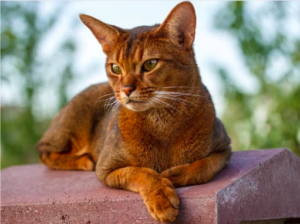
Overview
The Abyssinian is often hailed as one of the smartest cat breeds. Known for their curiosity and playful nature, Abyssinians are quick learners who thrive on mental stimulation.
Training and Activities
Abyssinians are highly trainable and enjoy interactive toys and puzzle feeders. They can learn tricks such as fetching and even walking on a leash. Their love for heights means they appreciate cat trees and climbing structures.
Siamese
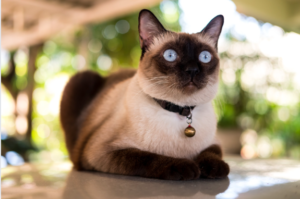
Overview
Siamese cats are not only intelligent but also highly vocal and sociable. They form strong bonds with their owners and are always eager to engage in activities.
Training and Activities
Siamese cats are quick to learn tricks and commands. They enjoy interactive play and can be trained to perform simple tasks like opening doors or retrieving items. Their vocal nature also makes them responsive to verbal cues.
Bengal
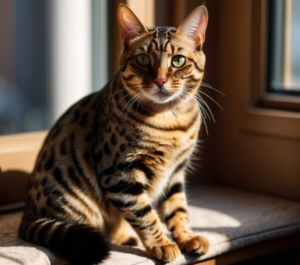
Overview
Bengals are known for their striking appearance and high energy levels. Their intelligence is reflected in their ability to solve problems and learn complex tasks.
Training and Activities
Bengals enjoy activities that challenge their minds, such as agility courses and puzzle toys. They can be trained to walk on a leash and perform tricks. Providing them with interactive playtime helps in channeling their energy positively.
Burmese
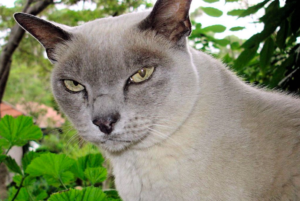
Overview
Burmese cats are affectionate, people-oriented, and intelligent. They enjoy being involved in family activities and can be trained to follow various commands.
Training and Activities
Burmese cats are quick learners and respond well to positive reinforcement. They enjoy learning tricks, playing fetch, and interactive games that stimulate their minds.
Scottish Fold
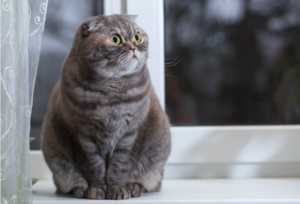
Overview
Scottish Folds are known for their distinctive folded ears and sweet demeanor. Despite their calm appearance, they are intelligent and can learn quickly.
Training and Activities
Scottish Folds enjoy interactive toys and games. They can learn tricks and commands and appreciate routines that keep their minds engaged.
Training Tips for Intelligent Cats
Start Early
Begin training your cat as early as possible. Kittens are more receptive to learning new behaviors and routines.
Use Positive Reinforcement
Reward your cat with treats, praise, or playtime whenever they successfully perform a desired behavior. Positive reinforcement strengthens the association between the action and the reward.
Keep Sessions Short and Fun
Cats have shorter attention spans than dogs, so keep training sessions brief and enjoyable. Incorporate playtime to make learning fun for your cat.
Be Patient and Consistent
Patience and consistency are key when training cats. Repeat commands and routines regularly, and avoid punishing your cat for mistakes. Consistency helps reinforce learning and builds trust.
Challenges of Training Intelligent Cats
Independence and Stubbornness
Intelligent cats can sometimes be independent and stubborn. They might choose to ignore commands if they are not in the mood, so it’s important to understand their behavior and work with it.
Need for Mental Stimulation
Highly intelligent cats require constant mental stimulation. Boredom can lead to behavioral issues, so ensure they have plenty of toys, activities, and interaction to keep their minds engaged.
Managing High Energy Levels
Breeds like Bengals have high energy levels that need to be managed. Providing them with enough physical and mental exercise is crucial to prevent destructive behavior.
Living with Intelligent Cats
Creating an Enriched Environment
An enriched environment is essential for intelligent cats. This includes a variety of toys, climbing structures, scratching posts, and interactive feeders to keep them stimulated.
Social Interaction
Intelligent cats thrive on social interaction. Spend quality time playing, training, and simply bonding with your cat to ensure they feel valued and engaged.
Understanding Their Needs
Each intelligent breed has its own unique needs and preferences. Understanding these and catering to them will help you build a strong and positive relationship with your cat.
Conclusion
Owning an intelligent cat can be an incredibly rewarding experience. These quick learners bring joy, challenge, and companionship to their owners. By understanding their unique characteristics and providing the right environment and training, you can foster a deep and fulfilling relationship with your feline friend.
Whether you choose an Abyssinian, Siamese, Bengal, Burmese, or Scottish Fold, you’re sure to enjoy the remarkable intelligence and personality they bring into your home.
Frequently Asked Questions (FAQs)
What makes a cat breed intelligent?
Intelligent cat breeds often show high levels of problem-solving abilities, adaptability, and social learning. They can quickly learn commands, tricks, and routines.
Can all cats be trained?
While some breeds are more receptive to training than others, all cats can be trained to some extent. Patience, consistency, and positive reinforcement are key to successful training.
What are the best toys for intelligent cats?
Interactive toys, puzzle feeders, and climbing structures are ideal for intelligent cats. These toys provide mental stimulation and keep them engaged.
How do I keep my intelligent cat from getting bored?
Provide a variety of toys, engage in regular playtime, and introduce new activities regularly. Rotating toys and creating an enriched environment also help prevent boredom.
Are intelligent cats more difficult to care for?
Intelligent cats can be more demanding in terms of mental stimulation and interaction. However, with the right approach and environment, they can be delightful companions.
We appreciate you for taking the time to read this article!
Finally, we hope you found this article interesting? And what do you think about ”Clever Cats: Breeds That Learn Fast!?”
Please feel free to share or inform your friends about this article and this site, thanks!
And let us know if you observe something that isn’t quite right.
Cats
The Enchanting Scottish Fold: A Guide to the Adorable Feline with Folded Ears
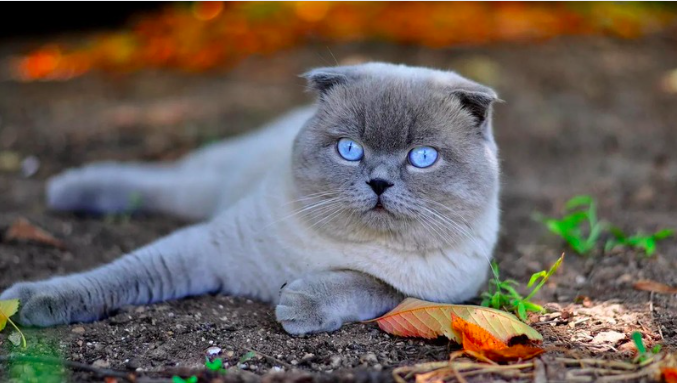
The Enchanting Scottish Fold: A Guide to the Adorable Feline with Folded Ears
Welcome to the world of the Scottish Fold cat, where charm and curiosity meet in an irresistibly adorable package. With their distinctive folded ears and sweet expression, Scottish Folds have captured the hearts of cat lovers around the world. Originally hailing from Scotland, these cats are known for their gentle demeanor, playful nature, and loving personality.
In this comprehensive guide, we will delve into the fascinating world of Scottish Fold cats, exploring their history, physical characteristics, personality traits, and care requirements. Whether you’re a seasoned cat owner or considering adding a feline friend to your family, the Scottish Fold’s unique charm and affectionate nature make them a delightful addition to any home. Join us as we unravel the enchanting tale of the Scottish Fold cat and discover why they are such beloved companions.
Fold
Overview
The Scottish Fold cat is a charming and distinctive breed known for its unique folded ears and sweet expression. Originating from Scotland in the 1960s, these cats have captured the hearts of many with their endearing appearance and affectionate nature. Scottish Folds are known for their gentle and loving temperament, making them wonderful companions for families and individuals alike.
History and Origins
The Scottish Fold breed traces its roots back to a white barn cat named Susie, who was found in Scotland in the early 1960s. Susie had a unique genetic mutation that caused her ears to fold forward, giving her an owl-like appearance. This trait was passed down to her kittens, and thus, the Scottish Fold breed was born. The breed quickly gained popularity for its distinctive look and friendly demeanor, and it was officially recognized by cat registries in the 1970s.
Physical Characteristics
- Folded Ears: The most distinctive feature of the Scottish Fold is its folded ears, which give the cat a sweet and owl-like appearance. Not all Scottish Folds have folded ears; some may have straight ears, known as “straights,” which are also common in the breed.
- Coat and Colors: Scottish Folds can have either a short or long coat, both of which are dense and plush. They come in a variety of colors and patterns, including tabby, tortoiseshell, and solid colors like white, black, and blue.
- Body Structure: Scottish Folds are medium-sized cats with a rounded appearance. They have sturdy bodies, round faces, and large, expressive eyes that give them a sweet and gentle expression.
Personality and Behavior
Scottish Folds are known for their calm and laid-back demeanor. They are affectionate cats that enjoy being around people and are often described as “lap cats” due to their love of cuddling. They are also known for their playful nature and enjoy interactive toys and games. Scottish Folds are generally good with children and other pets, making them a great choice for families.

Health and Care
- Ear Care: Due to their folded ears, Scottish Folds may be prone to ear infections. It’s important to regularly check and clean their ears to prevent issues.
- Grooming: Scottish Folds have dense coats that require regular grooming to prevent matting and tangling. Weekly brushing is usually sufficient to keep their coat in good condition.
- Health Concerns: Scottish Folds are generally healthy, but they may be prone to certain genetic conditions, including a skeletal disorder known as osteochondrodysplasia. Responsible breeding practices can help minimize the risk of these health issues.
Training and Activities
Scottish Folds are intelligent cats that can be trained to perform tricks and commands. They enjoy interactive play and benefit from toys that stimulate their minds and bodies. Providing them with scratching posts and other outlets for their natural behaviors can help keep them happy and healthy.
Compatibility with Families and Other Pets
Scottish Folds are known for their gentle and affectionate nature, making them great companions for families. They are good with children and other pets, including dogs, and can adapt well to different environments. Their loving and sociable nature makes them a popular choice for households looking for a friendly and affectionate pet.
Conclusion
The Scottish Fold cat is a unique and charming breed known for its folded ears and sweet expression. With their gentle demeanor and affectionate nature, Scottish Folds make wonderful companions for families and individuals alike. Whether you’re looking for a lap cat to cuddle with or a playful friend to keep you entertained, the Scottish Fold cat is sure to bring joy and companionship to your home.
FAQs about Scottish Fold Cats
Why do Scottish Folds have folded ears?
Scottish Folds have a genetic mutation that affects the cartilage in their ears, causing them to fold forward. This unique trait gives them their distinctive appearance.
Are Scottish Folds prone to ear problems due to their folded ears?
Yes, Scottish Folds may be more prone to ear infections due to the fold in their ears, which can trap dirt and moisture. Regular cleaning and monitoring of their ears can help prevent issues.
Do Scottish Folds have any health issues associated with their folded ears?
Scottish Folds may be prone to a condition called osteochondrodysplasia, which affects the development of their cartilage and bones. Responsible breeding practices can help reduce the risk of this condition.
Are Scottish Folds good with children and other pets?
Scottish Folds are known for their gentle and friendly nature, making them good companions for families with children and other pets. They enjoy socializing and being part of the family.
Do Scottish Folds require a lot of grooming?
Scottish Folds have dense coats that require regular grooming to prevent matting and tangles. Weekly brushing is recommended to keep their coat in good condition.
We appreciate you for taking the time to read this article!
Finally, we hope you found this article interesting? And what do you think about ”The Enchanting Scottish Fold: A Guide to the Adorable Feline with Folded Ears!?”
Please feel free to share or inform your friends about this article and this site, thanks!
And let us know if you observe something that isn’t quite right.
Cats
The Enchanting Burmese Cat: Affectionate, Playful, and Loyal
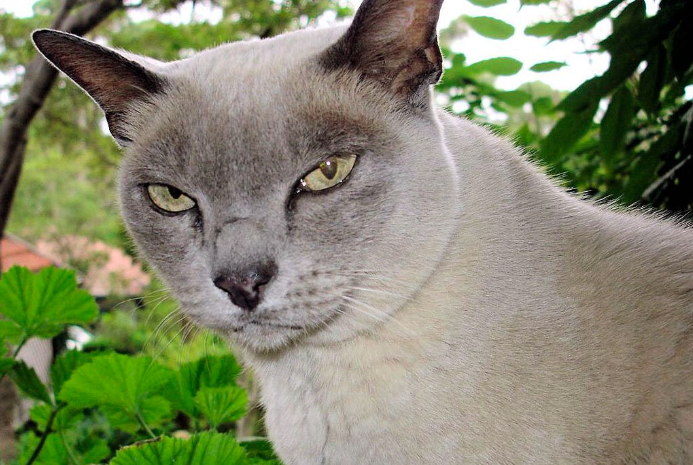
The Enchanting Burmese Cat: Affectionate, Playful, and Loyal
Enter the world of the Burmese cat, where elegance meets affection in a charming feline companion. Originating from the temples of Burma, these cats have captured the hearts of cat lovers worldwide with their striking appearance and loving nature. With their sleek coats, expressive eyes, and playful demeanor, Burmese cats are not just pets; they are cherished members of the family.
In this comprehensive guide, we delve into the captivating world of Burmese cats, exploring their history, physical characteristics, personality traits, and care requirements. Whether you’re a seasoned cat owner or considering adding a feline friend to your family, the Burmese cat’s unique blend of beauty, intelligence, and affection is sure to captivate you. Join us as we unravel the enchanting tale of the Burmese cat and discover why they are such beloved companions.
Burmese
Overview
The Burmese cat is a breed known for its striking appearance and affectionate nature. Originating from Burma (now Myanmar), these cats are renowned for their sleek, muscular bodies, expressive eyes, and silky coats. Burmese cats are often described as “people-oriented,” as they form strong bonds with their human companions and enjoy being part of the family. Their playful and curious nature makes them delightful companions for both children and adults alike.
History and Origins
The history of the Burmese cat can be traced back to ancient Burma, where they were considered sacred and kept by monks in temples. They were later brought to the West in the early 20th century and quickly gained popularity for their striking appearance and affectionate personality. The breed has since become a favorite among cat enthusiasts worldwide, known for its loving and loyal nature.
Physical Characteristics
- Coat and Colors: Burmese cats have short, sleek coats that lie close to the body. They come in a variety of colors, including sable, champagne, blue, and platinum. The coat is soft and silky to the touch, adding to the breed’s overall charm.
- Body Structure: Burmese cats are medium-sized with a muscular build. They have rounded heads, large, expressive eyes, and short, straight noses. Their compact bodies give them a sturdy appearance, and they move with grace and agility.
- Eyes and Ears: Their eyes are one of their most striking features, being large, expressive, and usually a deep, rich color that complements their coat. Their ears are medium-sized, slightly rounded at the tips, and set wide apart on the head.
Personality and Behavior
Burmese cats are known for their affectionate and sociable nature. They are often described as “dog-like” due to their tendency to follow their owners around the house and seek out human companionship. They are also highly intelligent and enjoy interactive play, making them great companions for families with children or other pets.
In addition to their affectionate nature, Burmese cats are also known for their vocalizations. They have a soft, sweet voice that they use to communicate with their owners, often engaging in “conversations” and expressing their needs and desires.
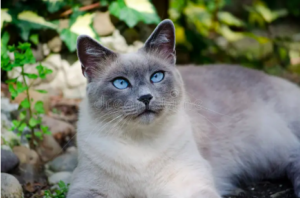
Health and Care
- Grooming: Burmese cats have short coats that require minimal grooming. Weekly brushing is usually sufficient to remove loose hair and keep their coat shiny. They also benefit from regular dental care to prevent oral health issues.
- Diet: A high-quality, balanced diet is essential for maintaining the health and vitality of Burmese cats. They should be fed a diet that is appropriate for their age, size, and activity level to ensure they receive the nutrients they need.
- Health Concerns: Burmese cats are generally healthy, but they can be prone to certain genetic conditions such as hypertrophic cardiomyopathy (HCM) and diabetes. Regular veterinary check-ups and a healthy diet can help manage these risks.
Training and Activities
Burmese cats are intelligent and can be trained to perform various tricks and commands. They enjoy interactive play and thrive on mental stimulation. Providing them with toys, puzzle feeders, and opportunities for play can help keep them entertained and prevent boredom.
Compatibility with Families and Other Pets
Burmese cats are known for their loving and social nature, making them great companions for families. They get along well with children and other pets, including dogs, as long as they are properly introduced. Their affectionate demeanor and playful nature make them a popular choice for households looking for a friendly and engaging pet.
Conclusion
The Burmese cat is a breed beloved for its affectionate nature, striking appearance, and playful personality. Whether you are looking for a loyal companion or a playful friend, the Burmese cat is sure to bring joy and warmth to your home. With their loving nature and sociable demeanor, Burmese cats make wonderful pets for families and individuals alike, enriching their lives with their presence and affection.
FAQs about Burmese Cats
What is the temperament of a Burmese cat like?
Burmese cats are known for their affectionate and social nature. They are often described as “dog-like” due to their loyalty and tendency to follow their owners around the house. They enjoy being involved in family activities and form strong bonds with their human companions.
Are Burmese cats good with children and other pets?
Yes, Burmese cats are generally good with children and other pets. They are playful and enjoy interactive play, making them great companions for families with children. They also get along well with other pets, including dogs, especially if they are introduced properly.
Do Burmese cats require a lot of grooming?
Burmese cats have short, sleek coats that require minimal grooming. Weekly brushing is usually sufficient to remove loose hair and keep their coat shiny. They also benefit from regular dental care to prevent oral health issues.
Are Burmese cats vocal?
Burmese cats are known for their soft, sweet voice, but they are not excessively vocal. They use their voice to communicate with their owners, often engaging in “conversations” and expressing their needs and desires.
What kind of environment is best for a Burmese cat?
Burmese cats thrive in environments where they have plenty of opportunities for play and interaction. They enjoy being part of the family and should have access to toys, scratching posts, and other enrichment activities. They also enjoy having access to outdoor enclosures or safe outdoor spaces where they can explore and indulge their natural instincts.
We appreciate you for taking the time to read this article!
Finally, we hope you found this article interesting? And what do you think about ”The Enchanting Burmese Cat: Affectionate, Playful, and Loyal!?”
Please feel free to share or inform your friends about this article and this site, thanks!
And let us know if you observe something that isn’t quite right.
-

 Pet Care2 years ago
Pet Care2 years agoThe Best Dog Collars For 2022
-

 Dogs2 years ago
Dogs2 years agoBichon Frise: The Happy, Playful, and Cuddly Companion
-

 Trending Pet Stories1 year ago
Trending Pet Stories1 year ago2023 ‘World’s Ugliest Dog’ Winner: Scooter’s Tale of Resilience
-

 Animals3 years ago
Animals3 years agoAre There Animals Having Down Syndrome?
-

 Pets2 years ago
Pets2 years agoThe Fascinating World Of The Red Chameleon
-

 Dogs3 years ago
Dogs3 years agoTop 10 Most Popular Dog Breeds According To AKC.
-

 Dogs3 years ago
Dogs3 years ago21 Dog Breeds That Resemble Bears Or Teddy Bears!
-

 Dogs3 years ago
Dogs3 years agoEskimo Dogs from Canada – What Are They? – Find Out!



